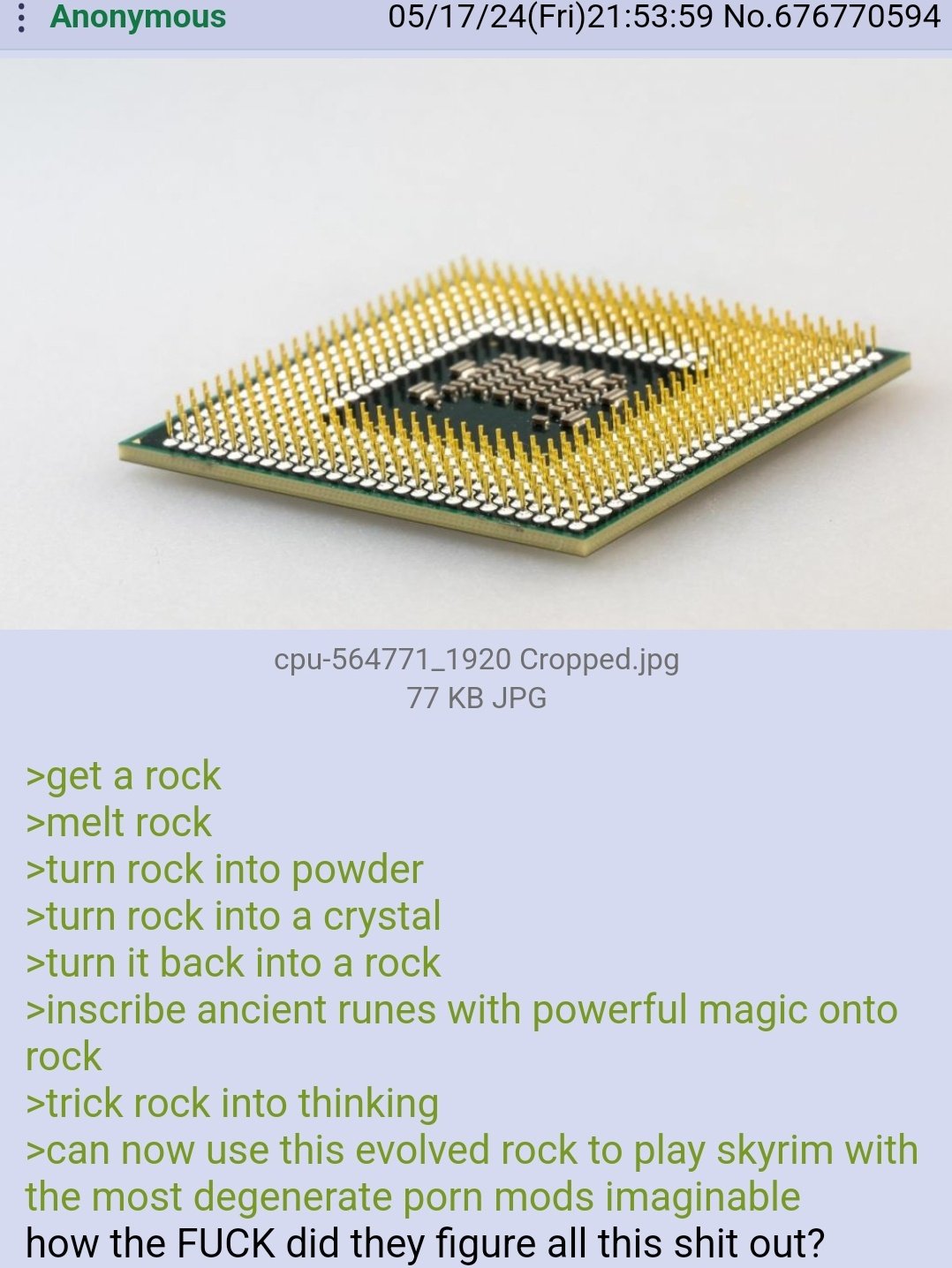this post was submitted on 07 Jun 2024
748 points (97.2% liked)
Greentext
4392 readers
1381 users here now
This is a place to share greentexts and witness the confounding life of Anon. If you're new to the Greentext community, think of it as a sort of zoo with Anon as the main attraction.
Be warned:
- Anon is often crazy.
- Anon is often depressed.
- Anon frequently shares thoughts that are immature, offensive, or incomprehensible.
If you find yourself getting angry (or god forbid, agreeing) with something Anon has said, you might be doing it wrong.
founded 1 year ago
MODERATORS
you are viewing a single comment's thread
view the rest of the comments
view the rest of the comments

They didn't start it with rocks. The first calculators used gears. Those were hard to reprogram. So they started using relais. That worked but was very slow. Then they found out that lamps (vacuum tubes) could take the place of relais but these wore down too fast. Then someone figured out that rock stuff (silicium) could do the same as a vacuum tube. After that it became a race to make them as small as possible to cram more of them together.
I took a course in computing systems engineering which was basically going all the way from semiconductors up to operating systems and it was incredibly interesting.
One of the things that surprised me was how easy it was to abstract away the lower-level complexity as soon as you got one step up. It's kind of like recursive Lego pieces, you only have to design one piece then you can use a bunch of those to design another piece, then use a bunch of those to design another, and so on. By the end you have several orders of magnitude of the fundamental pieces but you don't really think about them anymore.
The thing about real world processor design though is that all those abstractions are leaky.
At higher levels of design you end up having to consider things like the electrical behavior of transistors, thermal density, the molecular dynamics of strained silicon crystals (and how they behave under thermal cycling), antenna theory, and the limits and quirks of the photolithography process you're using (which is a whole other can of worms with a million things to consider).
Not everyone needs to know everything about every part of the process (that's impossible), but when you're pushing the limits of high performance chips each layer of the design is entangled enough with the others to make everyone's job really complicated.
EDIT: Some interesting links:
https://www.youtube.com/watch?v=U885cIhOXBM
https://www.youtube.com/watch?v=ljZt_TQegHE
https://www.youtube.com/watch?v=rdlZ8KYVtPU